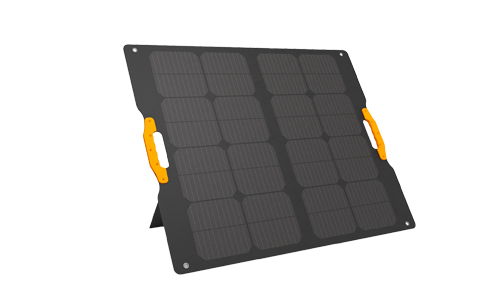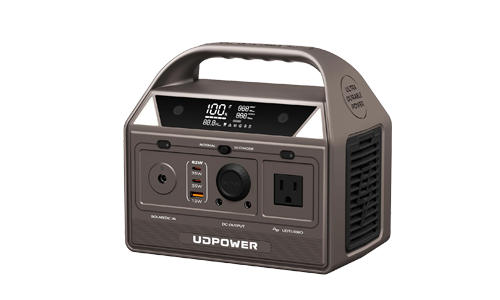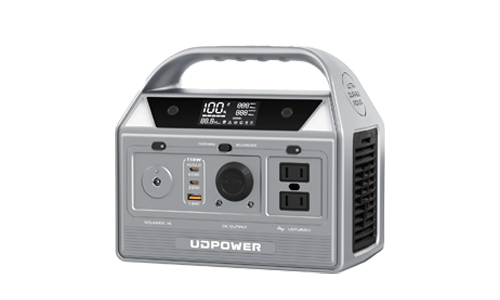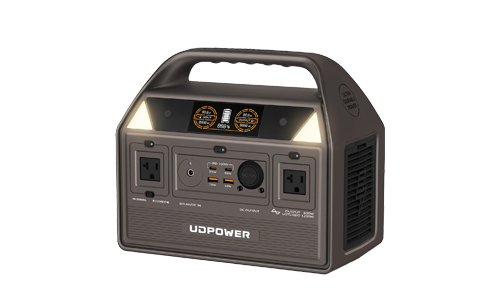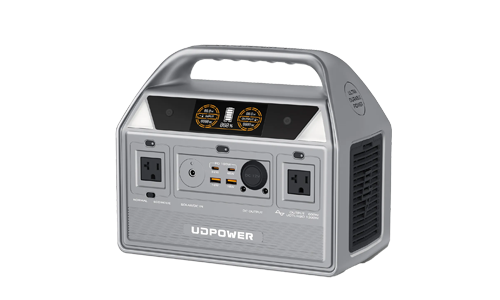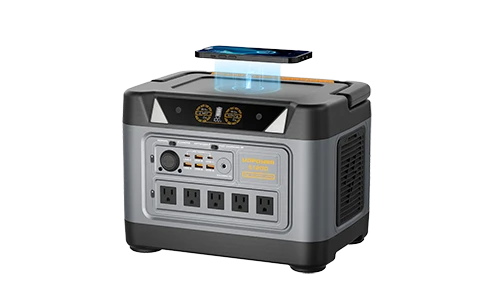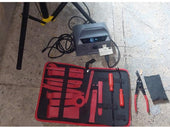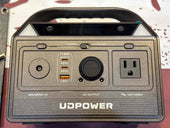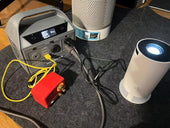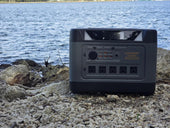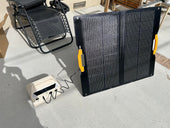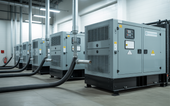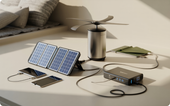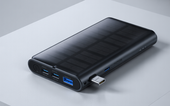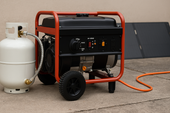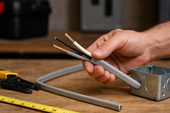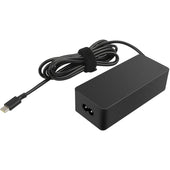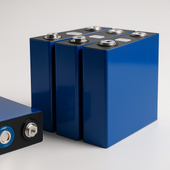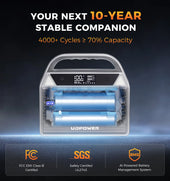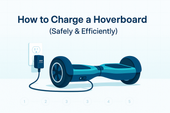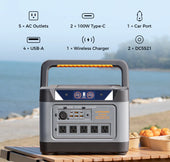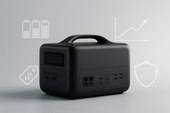Can I Leave My Portable Power Station Plugged In All the Time?
ZacharyWilliamTable of Contents
- Introduction
- How Portable Power Stations Work
- Scenarios for Leaving a Power Station Plugged In
- The Impact of Continuous Charging
- Best Practices for Charging Your Portable Power Station
- Pros and Cons of Leaving It Plugged In
- Manufacturer Guidelines
- FAQ
- Conclusion
Introduction
Portable power stations have become indispensable for those who need reliable power on the go. Whether you're using it for camping, as a backup for your home, or to power off-grid devices, understanding how to properly care for your portable power station is key to maintaining its longevity. One of the most common questions users have is: Can I leave my portable power station plugged in all the time?
This question is not as straightforward as it seems. There are multiple factors at play, including battery type, usage patterns, and environmental conditions. In this article, we'll dive deep into the topic, exploring how continuous charging impacts your power station, the best practices for charging, and what you need to consider to keep your unit running smoothly for years to come.

How Portable Power Stations Work
To understand whether you can leave your portable power station plugged in all the time, it's crucial to first understand how they work.
Basic Function
Portable power stations are designed to store energy in a battery and provide it to your devices when needed. They typically use lithium-ion (Li-ion) or lithium iron phosphate (LiFePO4) batteries, which are rechargeable and capable of providing consistent power over long periods.
Lithium-ion (Li-ion) Batteries: These are the most common in portable power stations. They store a significant amount of energy relative to their size, making them ideal for compact devices. However, Li-ion batteries are sensitive to both overcharging and extreme heat, so leaving your power station plugged in for extended periods can cause the battery to degrade faster.
Lithium Iron Phosphate (LiFePO4) Batteries: These are becoming increasingly popular in high-end models because of their superior lifespan and better tolerance to heat. A LiFePO4 battery can handle continuous charging without significant degradation, making it ideal for users who need to leave their power station plugged in for longer durations.
Battery Management System (BMS)
Most modern portable power stations are equipped with a Battery Management System (BMS). This system helps regulate charging and prevents overcharging by cutting off power once the battery reaches 100%. However, while the BMS offers protection, it's still essential to understand the long-term effects of continuous charging.
Related Reading: Is It Worth Buying a Portable Power Station?

Scenarios for Leaving a Power Station Plugged In
Now, let's look at different scenarios where you might consider leaving your portable power station plugged in.
Scenario 1: Long-Term Storage
If you’re storing your power station for an extended period, it’s best not to leave it plugged in. While some newer models are designed to handle this, leaving a power station plugged in for weeks or months can cause unnecessary wear on the battery.
Best Practice: Store the unit at around 50% charge and unplug it. Ideally, check the charge every 3-6 months and top it off to 50% if needed.
Why It Matters: Batteries tend to degrade faster when left at 100% or 0% charge. Keeping the charge at 50% helps maintain optimal battery health during storage.
Scenario 2: Regular Use with Continuous Charging
If you use your power station regularly, for example, to charge your devices or run small appliances, it's typically okay to leave it plugged in while in use.
Best Practice: If you're using the power station to charge devices overnight, it’s okay to leave it plugged in. Just ensure the unit has a BMS that will stop charging once it reaches 100%.
Why It Matters: As long as the power station doesn’t overcharge, leaving it plugged in during use shouldn't cause immediate harm. However, it's important to monitor battery health over time, especially for Li-ion batteries.
Scenario 3: Emergency Backup Setup
Many people use portable power stations as part of their emergency backup systems. In this case, you may leave the power station plugged in continuously.
Best Practice: For emergency setups, make sure the power station has a temperature and charge regulation system that prevents overheating and overcharging.
Why It Matters: Keeping a power station plugged in for extended periods is safe, but regular checks for battery health and proper temperature regulation are essential.
Scenario 4: Solar Charging and Continuous Connection
If your power station is set up for solar charging, leaving it plugged into the solar panel can be safe. Solar power stations often come with charge controllers that prevent overcharging.
Best Practice: Ensure your power station has a solar charge controller to regulate the input when the battery reaches full capacity.
Why It Matters: This protects the unit from overcharging and allows it to operate continuously without the risk of battery damage.

The Impact of Continuous Charging
Leaving your portable power station plugged in continuously can have a long-term effect on battery health. Let’s look at how continuous charging impacts different types of batteries.
Lithium-ion (Li-ion) Batteries
Li-ion batteries are more sensitive to continuous charging. They lose capacity over time if kept at 100% for too long, which is why it’s recommended to unplug the device when it’s fully charged.
Heat Impact: Li-ion batteries generate heat during charging. If the power station is left plugged in for extended periods, it can cause the battery to overheat, further reducing its lifespan.
Lithium Iron Phosphate (LiFePO4) Batteries
LiFePO4 batteries are more durable and can tolerate continuous charging better than Li-ion batteries. These batteries are often used in higher-end models because of their resilience.
Heat Resistance: LiFePO4 batteries have better heat resistance and can handle prolonged charging without significant degradation.
Best Practices for Charging Your Portable Power Station
To maximize the lifespan of your power station’s battery, here are some best practices for charging:
- Avoid Overcharging: Once the battery reaches full charge, unplug it. While modern devices come with BMS to prevent overcharging, keeping it plugged in indefinitely may still cause gradual degradation over time.
- Partial Recharges Are Better: Avoid letting the battery fully discharge before recharging. Lithium batteries perform better when kept between 30%-80% charge.
- Monitor Temperature: Overcharging, especially in hot environments, can cause the battery to overheat, which will degrade its performance. Ensure the unit is stored in a cool, dry location, and consider using it in a well-ventilated space to avoid heat buildup.
- Store at 50% Charge for Long-Term Storage: If you're not going to use the power station for a while, store it at 50% charge to prevent damage. Avoid storing the device fully charged or completely drained.
Pros and Cons of Leaving It Plugged In
Pros:
- Always Ready to Use: Your power station will always be fully charged and ready for emergencies or daily use.
- Convenience: You don’t need to manually monitor the charging process.
Cons:
- Battery Degradation: For Li-ion batteries, leaving it plugged in for extended periods can cause the battery to degrade faster.
- Heat Risks: Prolonged charging can cause overheating, which may affect both the battery and internal components.
Manufacturer Guidelines
Always refer to the manufacturer’s manual for specific instructions on your model. Most modern power stations have built-in protections, but guidelines may differ depending on the battery type, charge management system, and usage recommendations.
FAQ
Q1: Can I leave my portable power station plugged in when I’m not using it?
A: It’s not recommended for long-term storage. For best results, store it at around 50% charge and unplug it.
Q2: How often should I charge my portable power station?
A: If you're using it regularly, charge it when it drops to 20%-30%. Avoid fully discharging it, and unplug once it hits 80%-100%.
Q3: Is it safe to leave my power station plugged in for extended periods?
A: It’s generally safe for short periods, but for long-term use, it’s better to unplug it after a full charge to prevent degradation.
Q4: Can I leave my portable power station plugged in while using it continuously?
A: Yes, but ensure it has a BMS to regulate the charge and avoid overcharging.
Q5: How can I tell if my portable power station is overheating?
A: Most units have a temperature monitoring system or indicator light that warns you if the unit is overheating.
Conclusion
Leaving your portable power station plugged in all the time can be safe if done properly, but it's important to understand the long-term effects on battery health. For optimal performance, follow the manufacturer’s guidelines and charge the device with best practices in mind. Proper care and regular monitoring of your power station can ensure its longevity and efficiency.
